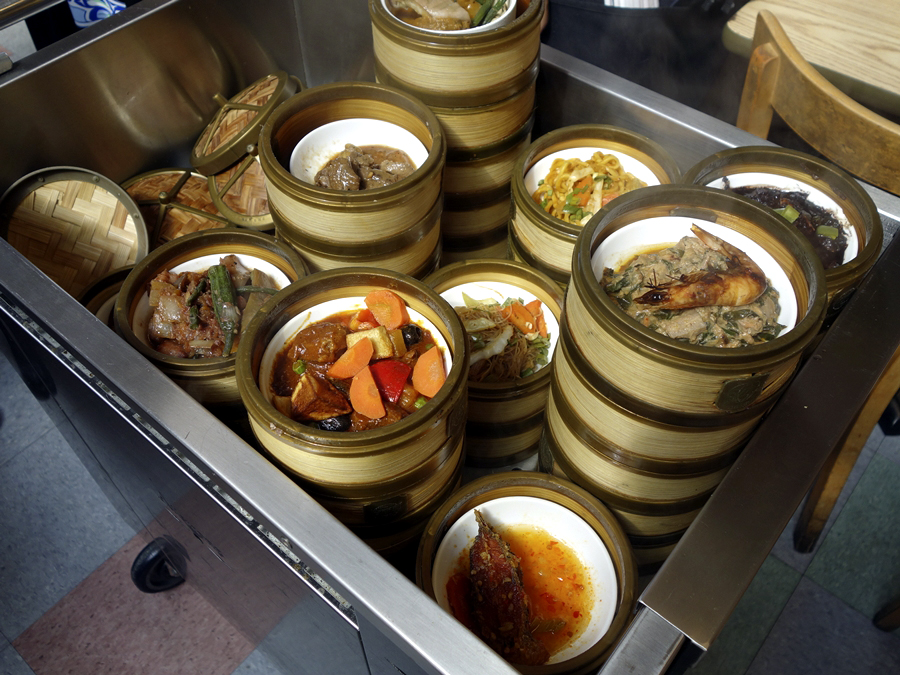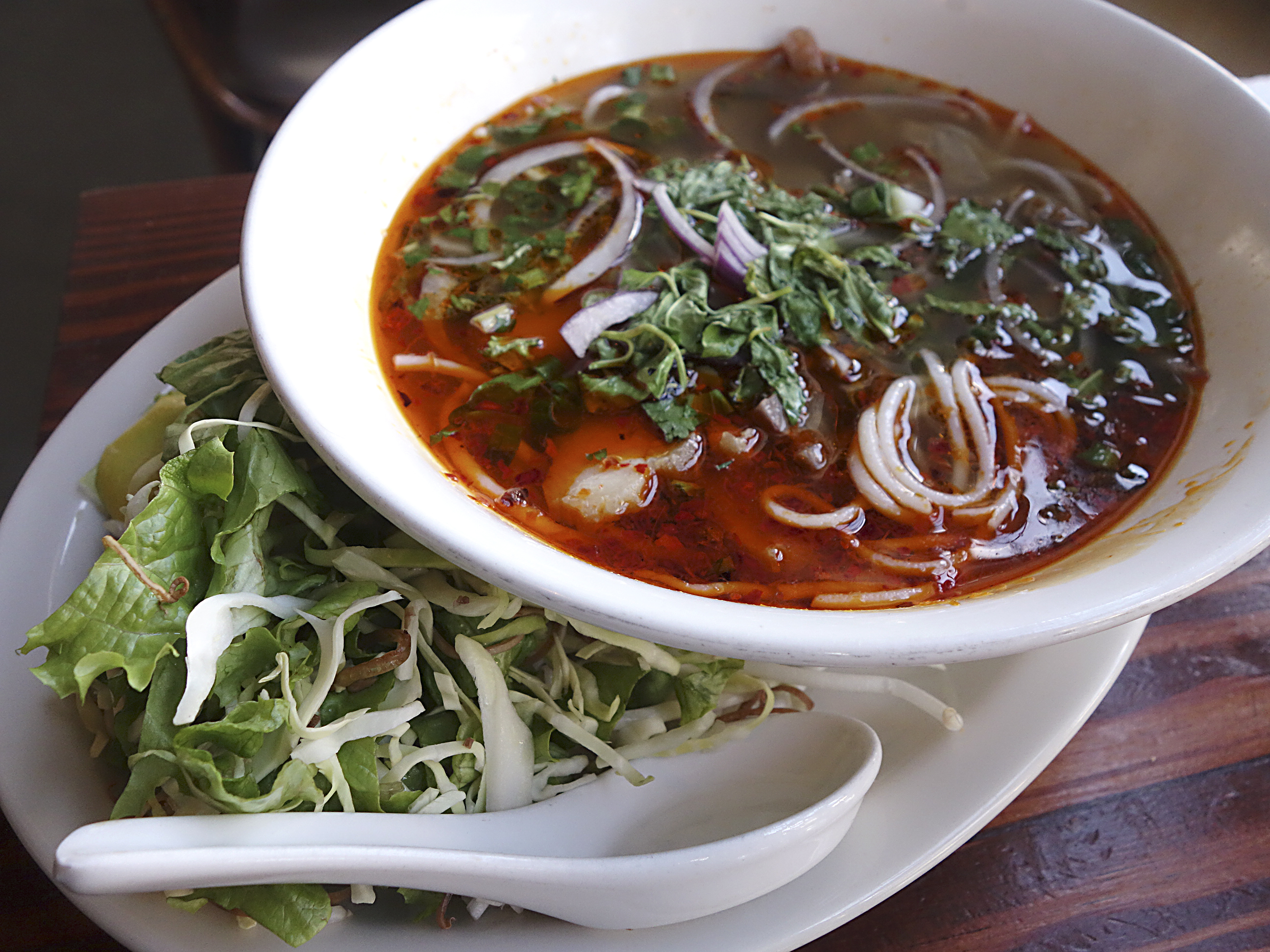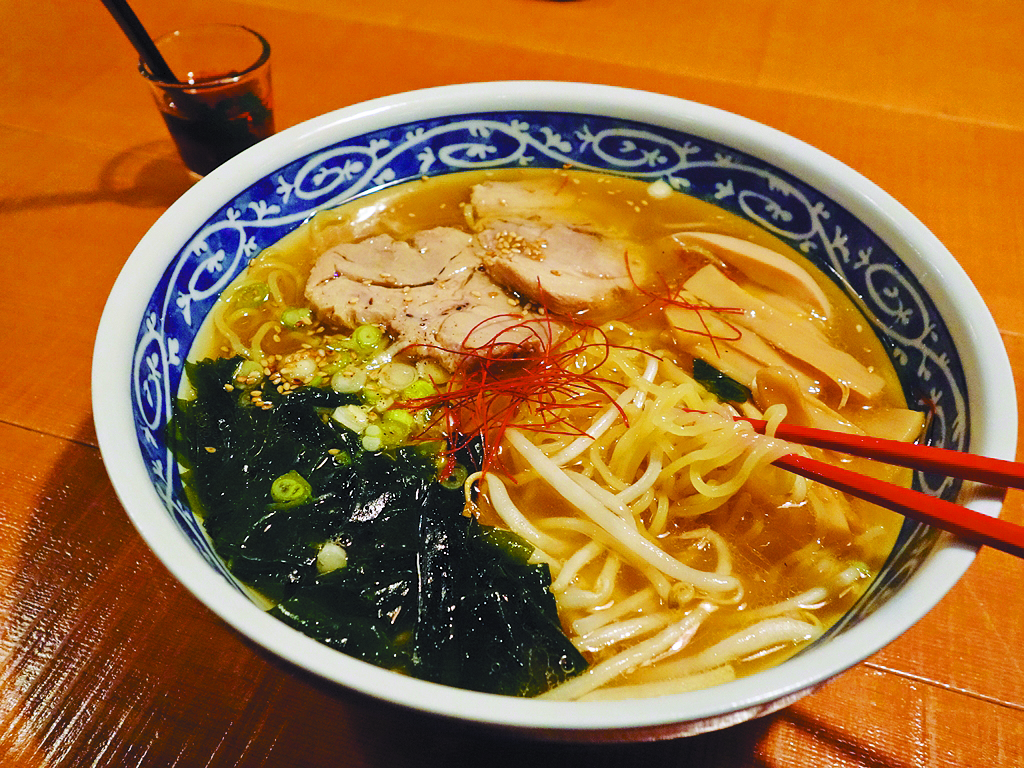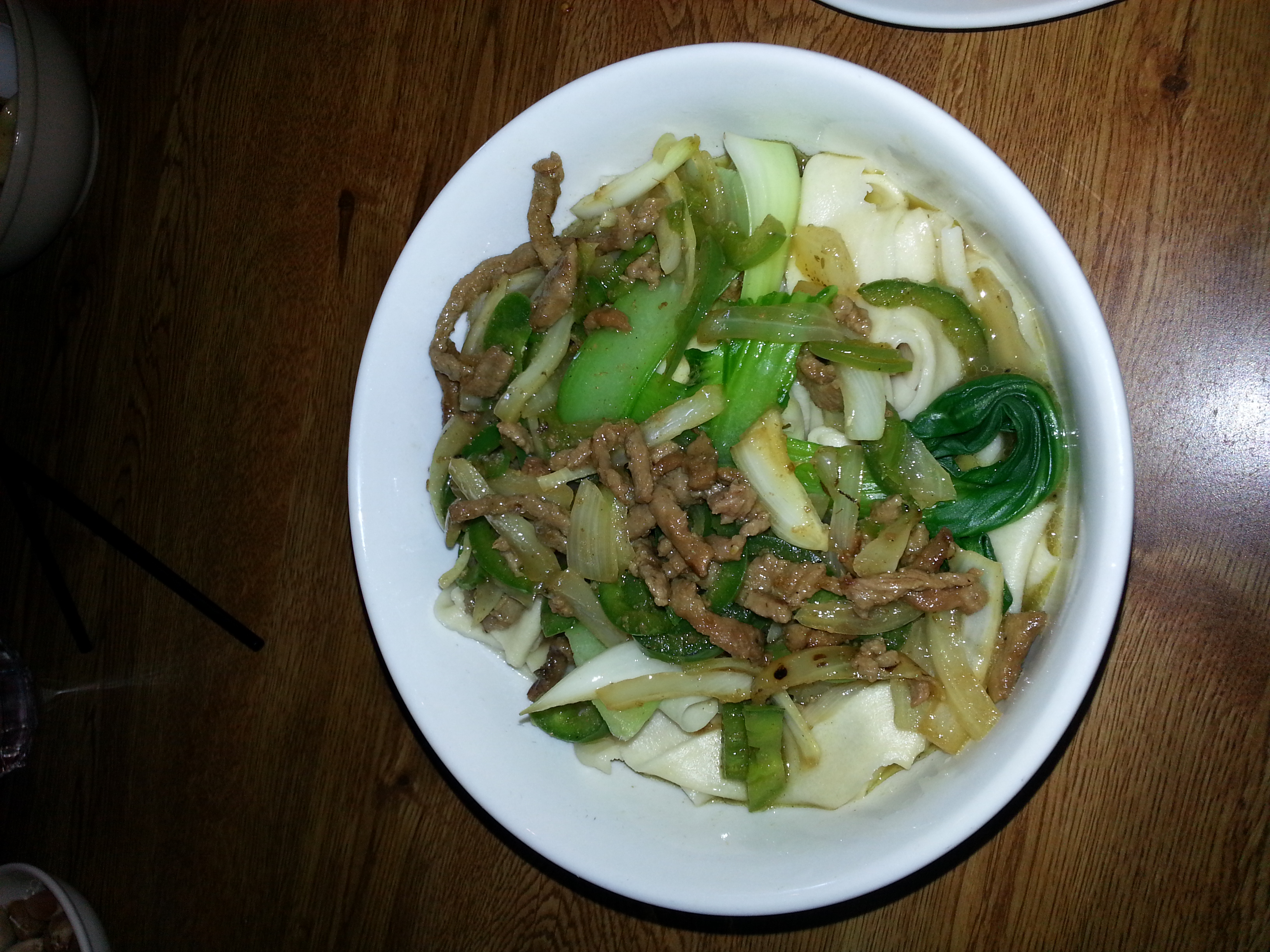2
014 was an exciting year for Chinese food in Seattle, with more in store for 2015. A number of new restaurants broke the boundaries of the staid Cantonese food scene (OK, we do have some good Sichuanese restaurants), serving hot pots, noodles, and dumplings that made this longtime Chinese-food skeptic finally swoon. Clearly I’m not alone.
For starters, look at the long lines at Boiling Point, which this year opened in the International District’s Uwajimaya Village. This California import offers a wide variety of Taiwanese-style individual hot pots (I’m partial to the mouth-burning Taiwanese Spicy with stinky tofu added), which include various ingredients for those who want a meal without doing any work. In contrast, just a stone’s throw away, Little Sheep Mongolian Hot Pot (an import from China) provides an interactive all-you-can-eat experience: Servers bring trays of ingredients by request from a large menu, and you cook them yourself in the bubbling broths.
Both Boiling Point and Little Sheep expanded from original Bellevue locations, as did Din Tai Fung, which opened this year in University Village. This Taiwan-based chain is best known for its xiao long bao (soup dumplings), but don’t overlook the shrimp and pork shumai. Giving Din Tai Fung a run for the money is Dough Zone in Bellevue’s Crossroads Mall (opening a second spot in Overlake early 2015). At this casual restaurant,the reasonably priced xiao long bao and the crispy shengjian bao are the way to go.
Also delicious at Dough Zone are lovely little bowls of delicate noodles, especially the ones with green onions and soy sauce. Spokesperson Ding Xia says that Dough Zone is “looking to serve the Chinese population and beyond, preparing snack-like portions of the Northern-style cuisine that we eat at home, often for breakfast: noodles, dumplings, crepes, and soy milk.” Miah Young, owner of Biang! in Edmonds (where business boomed this past year after its late-2013 opening), says her restaurant has a similar mission: “Each day we prepare five types of dough for our noodles and dumplings and bread so that customers can enjoy our home-style cooking.” The difference: The namesake biang-biang noodles (from Xi’an province) are long and wide, assertively chewy, and addictively delicious—especially when topped with oil-seared chili flakes.
Seattle’s resurgent love of Chinese food extends to dim sum, but with a twist, applying the concept most interestingly at non-Chinese places. You can choose Asian-fusion food from a cart (or a tray) at the new Tray Kitchen in Fremont (think kung pao corned beef tongue and kimchi falafel), or go to Isla Manila Bar & Grill in Northgate for an intriguing foray into Filipino food via a “flip sum” meal where adobo, dinuguan, and the like are served in steamer baskets. Hopefully as quality Chinese food continues to trend in Seattle, the quality of traditional Chinese dim sum will improve before long, too.
Also in the “Chinese with a twist” category are two new places on Capitol Hill. Just open is Zhu Dang, where chef Pat Chang says “We’re cooking Seattle-style Chinese food, using Chinese technique with as much local, seasonal ingredients as possible.” Owner Steve Cheng adds that there’s a “focus on flavor over tradition.” At Zhu Dang, dishes like Mongolian beef tartare and General Tso’s veal sweetbreads will likely appeal to Capitol Hill’s cocktail-sipping clientele.
Not far away, watch for the mid-year opening of Lionhead from Poppy (and former Herbfarm) chef Jerry Traunfeld. Inspired by a recent food tour of China (he’s a longtime fan of Chinese food), Traunfeld says that Lionhead’s emphasis will be Sichuanese dishes: “My mission is to cook Chinese food using high-quality ingredients that people in Seattle will love, not to recreate dishes as authentically as possible. There will be a degree of creativity in my menu, but more importantly I’m trying to come up with what I think is the best version of each dish with flavors that are true to the cuisine.”
Traunfeld adds that “Sichuanese food is exciting and addicting, but I think the flavors are still undiscovered by many people here.” That view is far from limited to Sichuanese food. The good news: New Chinese restaurants in Seattle helped us discover new flavors in 2014, and hopefully 2015 will be just as propitious.
food@seattleweekly.com








